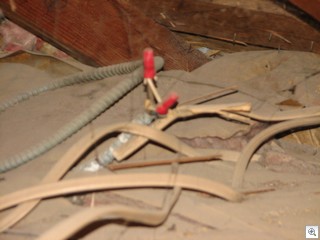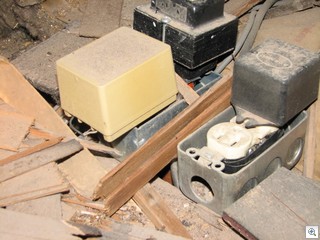Why Inspections Are Important – Especially For Vintage Las Vegas Homes

It’s a standard part of the “Due Diligence” period for a home buyer to get the property inspected. The purchase contract is very explicit that during the due diligence period, the buyer has the opportunity to explore all aspects of the property before making their final decision to go ahead with the purchase.
Beside the opportunity to check things such as the title work, any association documents if there is one, zoning, airplane noise, etc. the Inspection is one of the most important things.
When you hire a professional inspector, they’re going to look at things in the house that aren’t readily visible when we’re out shopping and making the preliminary decision as to which home to buy.
There’s really only FOUR outcomes of the inspection. All four are good for the buyer.
1) A clean bill of health for the property
2) A checklist of minor things that could or should be upgraded, fixed or taken care of someday.
3) An opportunity to renegotiate with the seller when something of significance is found.
4) The inspector finds something so important that the buyer will choose to cancel the transaction instead of being faced with a really big repair.
 The transaction that I’m doing right now on a Huntridge home fooled us on the question of electricity. The main service panel in the Huntridge homes had screw in fuses, and only 60 Amp main service. In this home, the main panel was upgraded approximately 5 years ago. From the ground in the back yard, it looked as if things had been taken care of.
The transaction that I’m doing right now on a Huntridge home fooled us on the question of electricity. The main service panel in the Huntridge homes had screw in fuses, and only 60 Amp main service. In this home, the main panel was upgraded approximately 5 years ago. From the ground in the back yard, it looked as if things had been taken care of.
All of the plugs and switches were modern looking. But at the inspection, we discovered that none of the plugs are grounded (which is not a terrible thing in itself, but ungrounded plugs shouldn’t have 3 hole outlets). We also got our first look at the attic space.
 Surprise! In between the service panel and the plugs was a mishmosh of old and new. We found old wires that were spliced to new ones. We found connections without junction boxes, ungrounded old cables spiced into 3 wire new romex, and junction boxes without covers. And the most dangerous, which I don’t have a picture of is splices that didn’t even have caps on them.
Surprise! In between the service panel and the plugs was a mishmosh of old and new. We found old wires that were spliced to new ones. We found connections without junction boxes, ungrounded old cables spiced into 3 wire new romex, and junction boxes without covers. And the most dangerous, which I don’t have a picture of is splices that didn’t even have caps on them.
The buyer called out an electrician who was horrified at what he saw. There’s so much to straighten out, and once you’re that deep into literally re-wiring the entire home, permits are required, and the electricity will need to brought up to current code. That means additional plugs in all the walls, separate circuits for the fridge, and a host of other things that normally don’t have to be done to 60 year old homes unless you want to.
I always insist with my buyers that screw in fuse panels be upgraded. It’s the VERY FIRST THING that I did to my 1954 home. Upgrading ALL of the electricity is good to do, but since it often requires opening up the walls it’s usually not done, nor does it HAVE to be. In this case, if the panel upgrade hadn’t involved some very unsafe practices in the attic, then a lot of the new expense could have been saved. We’re currently negotiating with the seller for the cost of the re-wire to be taken off of the price of the home.
The buyer’s key desire is to make the home a showplace of what Huntridge Homes looked like when they were built between 1942 and 1948. But it will have to be a safe home. It’s going to be almost $4000 to straighten out the mess in the attic.
I’ll be telling some other inspection stories later in the week.
